Lara Biyuts's Blog, page 4
May 27, 2013
Forever Jocelyn
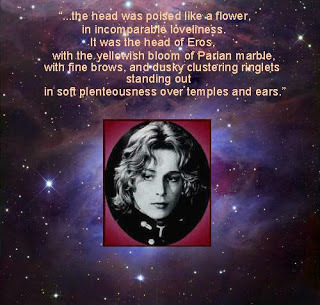
take the chance to read it, for free:
prose poem / remake from the novelForever Jocelyn, by Lara Biyuts
"Mon enfant, ma soeur,Songe à la douceurD'aller là-bas vivre ensemble!"(Invitation to the Voyage / L'invitation au voyage, poem from Charles Baudelaire's Fleurs du mal / Flowers of Evil)
My son, my sin, scion of my soul… let’s go away to the land where we’ll be able to live together and love at will, love till death, to the land that is like you! It’s the world of a secret dream, where all is order and beauty, luxury, peace and pleasure. The misty sunlight of those cloudy skyes has the charms for anyone’s tired mind. The mysterious order of your treacherous blue eyes disarms, shining brightly through the cover of their tears, and we’ll enter the stately ancient house, where our bedroom is gleaming with the glossy furniture, polished by the palm of the vanished years; where the fragrance of the gaudy flowers of evil is tinged with the warm scent of ambergris; where coziness itself is time-polished. The high ornate ceilings, the limpid fathomless mirrors playing every facet in the oriental splendor, all will whisper there secretly to you in the soft native language of soul, the only language worth understanding. See on the canals the big gallant ships sleeping in their vagrant fancy way; it’s for your least whim, dear, the ships came from the ends of the earth. Sinking below, the sun graces the seas and canals, the streets and buildings, with shining hyacinths and gold, and the city is falling asleep in the fiery splendor of the pre-gloaming glow… My son, my sin, my scion, let’s go away to the land where we’ll be able to live together and love at will, love till death,
to the land that is like you!
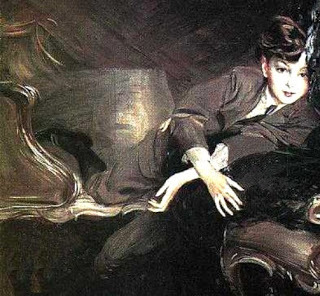
http://www.smashwords.com/books/view/30041http://www.lulu.com/shop/lara-biyuts/forever-jocelyn/ebook/product-20207373.html
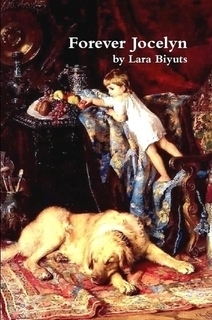
Published on May 27, 2013 09:28
April 15, 2013
The Rite of Spring
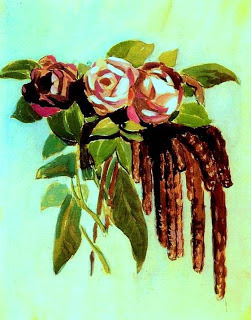
"April Is Sacred Sex Workers Month"
by Finnchuill
Along with transgender and genderqueer people modern paganism has by and large shied away from celebrating the sacred sex work that was an important part of many ancient cultures. Many well-known deities like Venus had aspects that were matrons of sex workers, and others had sex workers involved in their festivities and rites like those of Bona Dea.
Prostitutes had a role in several ancient Roman religious observances, mainly in the month of April. On April 1, women honored Fortuna Virilis, "Masculine Luck," on the day of the Veneralia, a festival of Venus. According to Ovid, prostitutes joined married women (matronae) in the ritual cleansing and reclothing of the cult statue of Fortuna Virilis. Usually, the boundary between respectable women and the infames was carefully drawn: for example, when a priestess traveled through the streets, attendants moved prostitutes along with other "impurities" out of her path.
On April 23, prostitutes made offerings at the Temple of Venus Erycina which had been dedicated on that date in 181 BC, as the second temple in Rome to Venus Erycina (Venus of Eryx), a goddess associated with prostitutes. The date coincided with the Vinalia, a wine festival. So-called ‘pimped-out boys; (the pueri lenonii) were celebrated on April 25, the same day as the Robigalia, an archaic agricultural festival aimed at protecting the grain crops from the plant pathogen rust. It was dedicated to a god or numen of ambiguous gender, either named as Robigus or Robigo who was propitiated with the sacrifice of a puppy (the Romans were weird!).
On April 27, the Floralia, held in honor of the goddess Flora , women characterized as prostitutes erotic dancing and stripping. According to the Christian writer Lactantius, "in addition to the freedom of speech that pours forth every obscenity, the prostitutes, at the importunities of the rabble, strip off their clothing and act as mimes in full view of the crowd, and this they continue until full satiety comes to the shameless lookers-on, holding their attention with their wriggling buttocks." The poet Juvenal also wrote about the nude dancing, and perhaps prostitutes fighting in gladiatorial contests.
=====
Flora-lora-laralia. Meanwhile, we at Revue Blanche celebrate the next event. Read Lara's latest interview at Pick Your Poison Book Reviews: http://pickyourpoisonbookreviews.blogspot.ru/2013/04/author-interview-lara-biyuts.html
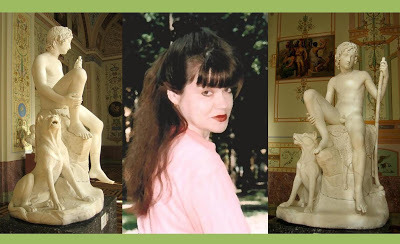
Published on April 15, 2013 09:16
March 26, 2013
Hope Springs a Turtle
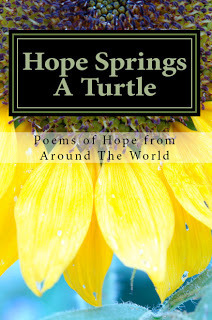
Hope Springs a Turtle is available to order now!!
This book is an ideal gift for the young and old showing everybody the importance and joy that hope brings.
Lara Biyuts is one of the contributors. Her poems’ titles in the anthology are 2: a poem from her novel "La Arme Blanche" and a poem "Secret".
“Inspirational.”
The kindle ebook version is ISBN-13: 978-1481039130 and costs £3.40
Click here to order:
http://www.amazon.co.uk/Hope-Springs-Turtle-Messages-Around/dp/148103913X/ref=sr_1_3?s=books&ie=UTF8&qid=1364237042&sr=1-3
The money this book raises for the mental health charity can be seen on Lost Tower Publications website.
at Amazon or your favourite bookshops.
This anthology is an eclectic collection of beautiful photographs and inspiring poetry from all over the planet, proving that hope is the power that unites everyone.
Secret
Snow. The town looking blind.
Light. No colours, only white.
Town--like a ship stuck fast in the ice.
Souls--lost in the universal vice.
Wind grasping a will of your will.
Stoned, you never thought it’s so real.
Town… But I know a secret. Listen:
the ice soon will thaw,
and your sunlit town will sail
at the height of springtide.
Lara Biyuts © 2007
poem from the novel La Arme Blanche
The long dark autumn-evenings came.
The greenish-smoky sea.
The milky shining foam in darkness.
Exalted pray within the soul,
and shining icy clearness in the mind.
On the dark autumn evening, hail oh winter,
which comes from the far mounts!
Oh messenger of springtime, ever new!
We meet each other at the plage, and there
we wander over boulder-stones.
Then we go home. At home,
we shall recall how we would wander.
That’s all, and nothing more. But we enjoy so much!
Tell me oh darling why?
Your lips in silence, in the long dark evening.
The soul is quiet like the sea. We are in hoar frost, in lilac silver.
Am I myself? Are you yourself right now?
Becalmed, the sea is like the soul; it plashes, slightly,
all over turquoise-clad, because of tenderness.
It moves, it breaths, it heeds.
You are so beautiful! How beautiful you are!
You’re waiting for springtime like springtime’s waiting
for you. You’ll meet each other, two springstimes, two lovely youths,
and our world will hardly be enough,
and other will be dreamt by you again:
you two, two springtimes will inevitably dream of frost,
its furs and diamonds, dawns and gloamings,
the rose-like frosting over panes, the ice-drifts and white sun.
The village’s sleeping. Snow-clad roofs
like flags of truce. It’s quiet oh so quiet.
In the defoliated shrubbery, a head of a Satyr shows menace.
The runners of a sleigh, on end, are gleaming. Heavenwards,
the soul flies. The mind is dreamless.
Lara Biyuts © 2010
Some comments:
“I loved the photos in this book, they took me on a spiritual journey around the world.”
“A beautiful book.”
The paperback is ISBN-13: 978-1481039130 and costs £11.69
Published on March 26, 2013 03:21
February 15, 2013
the sequel
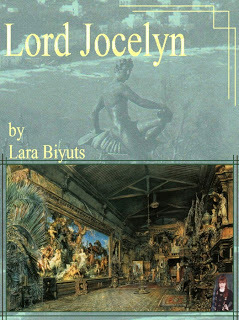
eBook:
https://www.smashwords.com/books/view/284860
http://www.lulu.com/shop/lara-biyuts/lord-jocelyn/ebook/product-20694915.html
http://www.goodreads.com/book/show/17371264-lord-jocelyn
“I navigate and stop where I want, in command of my caprice, creative works and leisure; it’s difficult to imagine a greater and more sensible authority in the vital endeavour of consciousness full of constant movement. This power in its exclusiveness and absoluteness is equal to power of a sorcerer. Really, an author wakes people’s imagination, the imagination begins working and the people take the imaginative for real, for a moment, at least. An image turns into a vision, which scores the place of honour in any vivid imagination, by right of an actual reality, however odd it sounds. No other business could so successfully fuse into a single whole all treasures of life while preserving inviolable the most delicate design of my every effervescent joy. Jeopardy and omens, the forces of nature and my own ardour, the lights of a distant town and a wondrous unknown, fleeting liaisons blossoming in rendezvous and partings and the fascinating turmoil of grand passion, faces, events and all the endless variety of life, while up above in the sky was now the sun, shining kindly or clouded, and the firm ground of knowledge, views and notions underfoot. All the continents are at my disposal, though my carriage is replete with my wondrous mighty homeland in shape of the books, which I had read or should read years ago, paintings, which I could not stop thinking about, my well-appointed room, and the flowers under glass. The silken strand of hair in a gold locket on my manly chest crowns my joy.” (Lara Biyuts. Lord Jocelyn)
paperback:
http://www.lulu.com/shop/lara-biyuts/lord-jocelyn/paperback/product-20698350.html
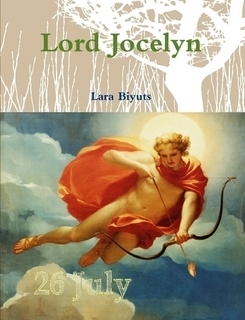
Published on February 15, 2013 03:00
February 1, 2013
about cats and s'more
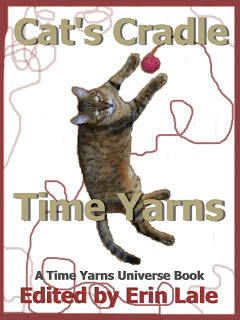
Cat's Cradle Time Yarns (Time Yarns Anthologies) [Kindle Edition] Carol Sumilas Boshears (Author), Monica Brinkman (Author), Donnie Nelson (Author), Lara Biyuts (Author), Erin Lale (Author, Editor), Candy Korman (Author), Tony Thorne MBE (Author), Susannah MacDonald (Illustrator)
http://www.perihelionsf.com/reviews.htm
The Perihelion review of Cat's Cradle Time Yarns is published
"Drifting from science fiction to fantasy, Don Nelson’s ‘The Sleepy Cat’s Treasure Hunt’ is a pleasant dream of a tale, reminding me of happy childhood days gazing rapturously at my Little Golden Book, ‘Captain Kitty.’ Nelson’s story features a cat sailor and his crew dodging the cannon balls of Pirate Dogs in the land of Grey and Pink. It’s sheer fun and escapism."
"Russian author Lara Biyuts will charm cat lovers with ‘Tomcat’s True Story.’ Her descriptions of cat behavior ring true. The prose could use some polishing, but the disappearance of King Basil, the rise of King Innkentius, aka Ken, and the cleverness of Barrwick make this a memorable tale."
"Monica Brinkman’s ‘Punky’ is a simple tale of a shelter cat finding a home with a human mommy. The prose is a little clumsy, the story predictable but sweet."
http://amzn.com/B00AV9H7I8http://www.onenewspage.com/n/Press+Releases/74vnp5a45/Cat-Cradle-Time-Yarns-Published.htm
...in short...
....oooO.............. .....(....)...Oooo... ......)../.....(....).... .....(_/...... )../..... ...............(_/....... ... I WAS ............ ............. HERE ......
Do you like text things ?
♥
♥
♥
._|\______________________,,_ (`'•.¸ (`'•.¸** ¸.•'´) ¸.•'´)
../ `--||||||||--------------------------- >> ADD ME
./_==o ____________________| (¸.•'´ (¸.•'´** `'•.¸) `'•.¸)
...),---.(_(__) /
..// (\) ),------'
.//___//
/`----'//
'------
Published on February 01, 2013 00:37
November 16, 2012
VN and me
One day, in the 1970s, in Switzerland, one young and famous poetess from the S.U. was received by Vladimir Nabokov, at his. The damsel was in state of veneration, when talking with the great writer (whose all works were banned in his homeland, btw, but she happened to read the works, anyway.) VN asked her, “How do you find my Russian?” “It’s the best,” she replied, and her voice vibrating.“Really?” VN said, “And I believed it’s frozen strawberry.”The conversation took place in the time, when I was oh so young, and I learned of the conversation later, much later, when reading one book of non-fiction, in the 1990s, the cursed 1990s (Confer: "Cursed Days," the book by Russian author Ivan Bunin) when personally I happened to survive, with no damage, but I keep on reckoning the time cursed, anyway, with one of reasons being that I didn’t live in Switzerland in the time when it became possible because I could not afford going there. However that may be, returning to the talk of literature, I’d like to say that remembering of the conversation, mentioned above, I should title my first blog “Reading with Frozen Strawberry.” Great allusion. On the other hand, “Strawberry” sounds too notorious, and “Frozen Strawberry” sounds intelligible not to everyone, to put it mildly, for me alone, strictly speaking. Besides, beginning my first blog I was eager for being as far from my homeland as possible in my thoughts, dreams and virtual life, and “Revue Blanche” sounded more unusual, meaningful, cosmopolitan, and accordant to my new fandom, and subsequently more Wildean which had more things to my taste than Nabokov’s works, with the only novel Pale Fire worth the kind attention of my main personage. I conclude: However VN looked and sounded in his lifetime, read the novel Pale Fire, anyway.
barnesandnoble.com/c/lara-biyutsibook...
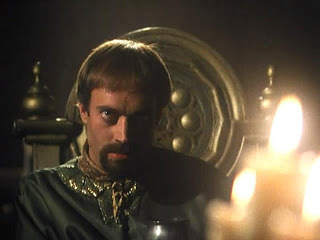
Published on November 16, 2012 20:46
November 11, 2012
Vigel
Continuing the theme of the homosexual surrounding of the Russian great poet A. Pushkin and his time.
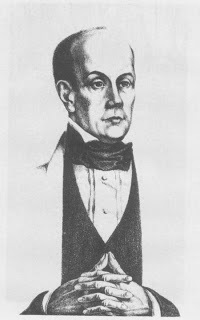

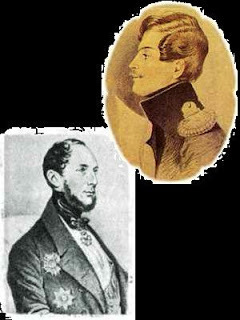
After Pyotr Chaadaev (1794-1856), Georges-Charles d’Anthès (1812-1895), and Faddey Bulgarin (1789-1859), with Chaadaev’s homosexual taste being only supposed...http://en.wikipedia.org/wiki/Faddey_Venediktovich_Bulgarin...today, I am happy to introduce the next forgotten literary figure Filipp Vigel (1786-1856) Russian noble of Swedish extraction who served in the foreign ministry, and who was Russian first outstanding memoirist. http://en.wikipedia.org/wiki/Filipp_Vigel
 Filipp Vigel happened to be a pen-pal to some Russian famous poets. In 1823, when he was sent in the town of Kishinev as a vice-governor of Bessarabia, he wrote to Pushkin about the town which caused the plaintive tone: “Althoughmysinsorrathermysinisgreatbutnottosuchanextentthatthefatecouldappointthispitasmyresidence.” HispoeticmessagetoVigel, Pushkinconcludedbythehumorousversehintingatthehomosexualtasteofhis addressee: “AssoonasIhavefreetime, I’llcome. Glad being at your service--with my poetry and prose and my all heart-- but, Vigel, haveyourmercyonmyass!”In the same message, Pushkin recommended “three jolly young beaus” to Vigel “believing that the younger of them is fitter for the proper usage. NB: he’s a room-mate of brother Mikhail, and by night, they bugger each other unrestrainedly which may suggest some important conclusions, which I leave to your sophistication and discretion.”
Filipp Vigel happened to be a pen-pal to some Russian famous poets. In 1823, when he was sent in the town of Kishinev as a vice-governor of Bessarabia, he wrote to Pushkin about the town which caused the plaintive tone: “Althoughmysinsorrathermysinisgreatbutnottosuchanextentthatthefatecouldappointthispitasmyresidence.” HispoeticmessagetoVigel, Pushkinconcludedbythehumorousversehintingatthehomosexualtasteofhis addressee: “AssoonasIhavefreetime, I’llcome. Glad being at your service--with my poetry and prose and my all heart-- but, Vigel, haveyourmercyonmyass!”In the same message, Pushkin recommended “three jolly young beaus” to Vigel “believing that the younger of them is fitter for the proper usage. NB: he’s a room-mate of brother Mikhail, and by night, they bugger each other unrestrainedly which may suggest some important conclusions, which I leave to your sophistication and discretion.” 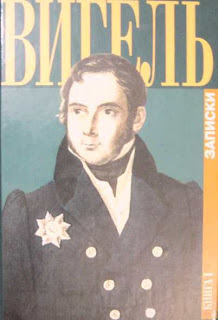 However, the literary sources are scanty about Filipp Vigel and others of that ilk, that’s why this note is so short. More about Russian forgotten literary figures of my choice, read here:http://revueblanche.blogspot.ru/2012/04/my-latest-collage.html
However, the literary sources are scanty about Filipp Vigel and others of that ilk, that’s why this note is so short. More about Russian forgotten literary figures of my choice, read here:http://revueblanche.blogspot.ru/2012/04/my-latest-collage.html 
Published on November 11, 2012 03:07
November 9, 2012
October 16, 2012
new eBooks
check out 2 new eBooks at Lulu.com :
The Autumn Gay Tints http://www.lulu.com/shop/lara-biyuts/the-autumn-gay-tints/ebook/product-20450914.htmlThe main character of my story The Autumn Gay Tints is a Londoner in his twenties of the name of Oscar Maria Graf. A Stenbock-like figure, by his origin and his dabbling in literature, he is much hotter, more active, able-bodied, pragmatic and of great vitality than Eric Stenbock (1860-1895) who is no more, by the time of the story. In the beginning, we see Oscar Maria Graf in his den, early in the morning. On the way home, his old friend drops at his and brings some news. The point is that their archenemy’s young relative comes to London, from countryside, unattended. They plan seduction of the young man. All the personages of the story are 20+ years old. Happy ending.
Fin de siècle and Mists of Albion http://www.lulu.com/shop/lara-biyuts/fin-de-si%C3%A8cle-and-mists-of-albion/ebook/product-20447351.html The short story “Fin de siècle and Mists of Albion” is initially a part of the novel “La Lune Blanche” (2005) by Lara Biyuts and at the same time a part of writings by the novel’s main character. Male bonding and the Victorian era. The big town and an orphan. Excesses of bachelorhood and a young thing learning the world. The new obsession of a middle-aged gay man and the mystery from the tangled and disturbing past. “Shared, secret, celebrated, exploded, subtle--as an unrequited longing or mellowing through the years--at long distance, across continents or so close, it is never quite close enough--from the inside out and from the outside in, the likely and the unlikely--hot, unfair, jealous, crazy Love is coming. Get ready--now, it comes to You!” (Lara Biyuts)
All SmashWords-published eBooks, the reader can find at iTune : http://itunes.apple.com/gb/artist/lara-biyuts/id442139308
novella A Handful of Blossoms as a guest post at The Pen & Muse http://wibi.us/Nh7lXQthe book review at Maggie Mack Books http://maggiemackbooks.com/2012/09/a-... Sam Kasbrick's Reviews http://sikbookreviews.blogspot.ca/201... Elisa Rolle Reviews http://elisa-rolle.livejournal.com/16...
interview at Roy Eynhallow's Creative World http://www.eynhallowbooks.com/2012/09...
Come to review the book at http://askdavid.com/reviews/book/para...
“O gentle vision in the dawn:My spirit over faint cool water glides,Child of the day,To thee;And thou art drawnBy kindred impulse over silver tidesThe dreamy wayTo me.” (Harold Monro, Collected Poems)
Thanks.Lara B.

Published on October 16, 2012 22:39
August 21, 2012
Mysterium Tremendum
Perhaps, creating the Page https://www.facebook.com/SilverThreadSpinnerand earlier, self-publishing all the fiction about the undead, I’ve lost face in eyes of serious writers, but… a grain of mystique in a narration always seemed nice for me. The essay is a part of my novel La Arme Blanche. http://www.smashwords.com/books/view/... finds his old essay and shows it to our dear boy Jocelyn.
Mysterium Tremendum
Cultural memorials in the form of written or verbal creative works of all nations are parables and allegories, for the most part, be it the story of King Arthur and his Round Table or the scriptural parables. Homer’s story of Ulysses’ travels and myths of Heracles’ labours show us an allegorical path of every hero towards his ascent. In the erotic and romantic stories of Adepts of Love and the Old Testament, in the myths of Osiris and Isis, in writings of Dante and Omar Khayyam, we can find ciphered descriptions of creation of the world. The ancients knew what they wanted to say by means of the language of symbols, and Spirit, which “breathes where it wants”, is mighty every time when it wants to revive the symbols and rites, giving them back their lost sense and entire initial power.To all of us, who speak different languages, the legends were given in order that we could teach as well as to learn to go along the path that leads towards our true vocation. Symbolism of the ancients acts a double part: keeping truths from the uninitiated and at the same time discovering the truths for those who understood the language of symbols. Those who cannot tell lies from truth will see only a fairy-tale. But a wise man can draw the curtain open and perceive the point. We shall draw the curtain open now, in order to research some aspects of symbolism and the origin of so-called folklore. The cosmogonic and mysterium-related myths, survived in the form of tales, parables and legends, often relate to the folk collective creative works, but contents of the folklore evidently indicate the myths’ descending from spiritual teachings which include universal symbols. We shouldn’t regard nature of folklore as a source of spiritual traditions. Like an individual mentality, the collective mentality is reduced to memory, in other words, it can conserve and save, which folklore’s function is in, but it is not able to produce anything, especially on the transcendental level. The folk saves the lore or information, without its own knowledge, functioning as a subliminal collective memory, and the folk’s natural unawareness of a true sense of the lore, which the folk passes verbally or in writing, from generation to another, and which is clad in the bright dress of symbols, is a good guarantee of saving the spiritual legacy intact, without mutilation, till the times when somebody is able to understand it. It’s known that many spiritual orders, like anybody else, trying to survive in their difficult times, often used this way of saving their system of symbols. Ultimately, it could be the only way of the last bearers to save their teaching, at least partly. For example, it’s reckoned that in this way domino, cards and Tarot have survived till our time, being entrusted by the ancient Egyptians initiated to human “vices” of passions and fear of the future. Knowing laws and capabilities of the emotional and vital powers, adepts could wittingly choose fearsome symbols for better guarantee of saving a spiritual system. Also, it must be said that in their small circle, the initiated never stood upon ceremony with mental notions, and in this connection, there may be one more version of the origin of some symbols which are so inadequate to the Puritan ideas of good and evil. When a spiritual order was disintegrated for some reason, all contents of its spiritual “cuisine” well might be thrown out to history. For example, calling a body “coffin”, the initiated named their scientific and charitable activity among laymen “adorning coffins and tombs.” About mother-nature, hardly forecasted and unruly therefore sacred and fearsome for the most of humans, the initiated could simply say as about a “whore, eating carrion and blood”, meaning the chaotic processes adopting experience and spending human vitality. Therefore we’ll take as guidance the following words: “There is nothing secret that cannot be evident; there is nothing hidden that cannot be discovered,” and we’ll discover mysteries and restore sense of symbols, treading in footsteps of enlightened people of all centuries. We’ll try to penetrate in symbolism of one ancient spiritual system, robbed of a proper attention of philosophers and esoterics, supposedly because of the excessive exploitation of its symbols and fantasies by fine art makers and their ignorant fans. The point in question is vampires.Regardless of the true origin of the words (which is not ultimately known), I venture to suggest that “vampire” comes from “empire”, all the more that the further researching a vampire’s habits well corresponds to the sense of the offered word-symbol. Who could the initiated call “imperious”, “grandiose”, “great”? Obviously, these and other titles indicate the one who has achieved the grandiose, that is the great, whole and illumed consciousness. To those who, using a traditional spiritual teaching, woke, carried a Great Work and reached their goal, the point, where the mystery teaching itself has become the means and method of achievement, because mysteries always were and still are an institution, established for transforming a mere ignorance to the precious enlightenment. Therefore a vampire, in other words, a man with illumed mind and whole consciousness is almost immortal--which is perfectly natural--and almost omnipotent, since he has an enormous strength and supernatural powers. He commands spirits of nature and animal instincts as powers of consciousness. He “lives alone”, that is, he realizes and fulfils his own individuality and wholeness. He “hunts alone”, that is, he is aware of his own responsibility for his choice. A vampire’s works indicate activity of all secret societies, such as Rosenkreuzer or alchemists; they know and foretell things to come, penetrating in mysteries of nature and life (the story of Frankenstein), turning metals in gold, making the elixir or cure-all, and looking for the philosophic stone. Thus, by all these signs, we see the question is a direct description of attributes and ends of a whole divine consciousness and illumed mind. And we have only to decipher all the rest notions of this kind of folklore. “A vampire feeds upon human blood.” Blood is a universal symbol of vital energy and strength of resurrection. A whole consciousness can live consuming the spiritual energy that flows through human consciousness. A whole consciousness can transform an ordinary consciousness, which ordinarily suggests death of a brain or mind sponging on the blood is an inevitable process. “On a full moon night, a vampire is especially dangerous.” As a body that reflects the sunlight, the moon is a symbol of subconsciousness that reflects the light of spirit. At a full moon night, at the most favorable moment of a fully reflected light of truth, an ordinary man can get enlightenment, and it goes without saying that any vampire is ready for offering his help to save any human from ignorance. A sad empiric cannot be more inspired and inspiring. “From a vampire’s bite a human dies, and then he returns to life as a vampire.” From a contact with a whole consciousness, an ordinary mind transforms, experiencing a symbolic death and consequently becoming whole too. A vampire’s bite on a neck or carotid artery of a victim symbolizes the influence of the illumed consciousness upon the ordinary one via the speech and ear, which leads to throwing back the former ideas or notions, at first, and to death of a human as he was, “a welter of contradictions”, and then to his resurrection as an immortal and mighty entity, that is one more vampire. “A vampire sleeps in a coffin by day, and he goes for hunting by night.” For a human who has a whole consciousness, the revealed universe or “day” is a “coffin”, in which one can only sleep seeing the illusive dreams about “realization of wishes”. “Night” or internal world, on the contrary, is a field for activities of the illumed mind, for creative works or “hunting” as listening to divine intentions. Also there is a version that a vampire sleeps “head down”, which is right too, because for a whole mind, the usual world is as though turned over. The mind creates when leaning on the heaven, and its logic, ends and values often are contrary to an ordinary mind’s. “A vampire can be recognized by the fact that he doesn’t reflect in a mirror.” The one who has achieved the whole consciousness, reflects in the mirror of the world no longer; he has neither the past nor his personal history, nor the future. He wholly belongs to spontaneity and magic of the current moment. Although living in the world, the human is free from limits of time, expanse and human notions. “A vampire can be killed by driving a silver stick or silver bullet in his heart.” Silver is a symbol of the material or female. All spiritual teachings warn their neophytes: if a human with whole consciousness is “tempted” being fascinated with a material end or thing, forgetting of the fact that he is the light, center and heart of all, then his “fall to life” takes place, and consequently, his loss of wholeness and immortality. “The sunshine does harm to a vampire.” According to spiritual systems, the daylight is only a reflection of a true source--spirit or the “midnight sun” of adepts. Although the earthly human notions, which give life and assurance to ordinary humans, mean nothing for the enlightened man, but he has to defend his body (soul) and eyes (divine sight of beauty) from the influence of cruel emissions of the world’s “Augean stables” in disguise of pop-culture. “From a vampire’s attack a human can defend with garlic, holy water, prayer-bead and crucifix.” Garlic is a good herb for cleaning a human organism. Holy water is a symbol of purifying a human mind. A crucifix in hands or on a neck may be regarded as a reminder of the union of spirit and material. A crossing of streams of strength. Telling beads is a symbol of a purposeful concentration upon creation and of a discipline of mind. However, we shouldn’t think of any defence from a mighty vampire. That’s amusing, at least. Even such a detail as a vampire’s hairstyle bears an important symbolic sense. The long curly hair of vampires and vampiresses, cascading on their shoulders, is an ancient symbol of wisdom and playfulness of a free illumed mind. A story of a vampire-hunter describes a mystery of a search of his own wholeness. The hunter is an ordinary but fearless man, who has sublime ends, and who has to wish to kill a vampire, and as a rule, he has to spend much time in search of the “monster”. When his desire leads him finally to a vampire, he has to begin fighting with the “monster”. A result of the fighting is predestined, because the vampire is unconquerable, so the hunter becomes a vampire. Thus, mortals achieve the wholeness of mind through conjoining with their own divine ego. It looks like all symbolists have chosen the labour (“adorning tombs”) on the summit of “Sofia”, clearing for us the hidden sense of symbols and metaphors. In our time of information, integration, communication and open knowledge, there is no use of wasting time for some unfounded superstitious fears or energy-wasting contradictions. The highest summits must be visible; the call must be heard; and the path towards them must become a realized aim of a human. So, an offer to become a “vampire-hunter” should not seem so absurd for us any more. To search and to find him in order to act our divine part. All of us are flame-born children of the galaxy. Around the flame, we frequently build shields that hide the light. But becoming pupils or hunters, we can find our place among the true insiders of the universe, those who have given themselves to the search for the sake of the ancient flame that burns within them. P. S. The full moon approaches. Vampires are waiting.
Published on August 21, 2012 04:07



